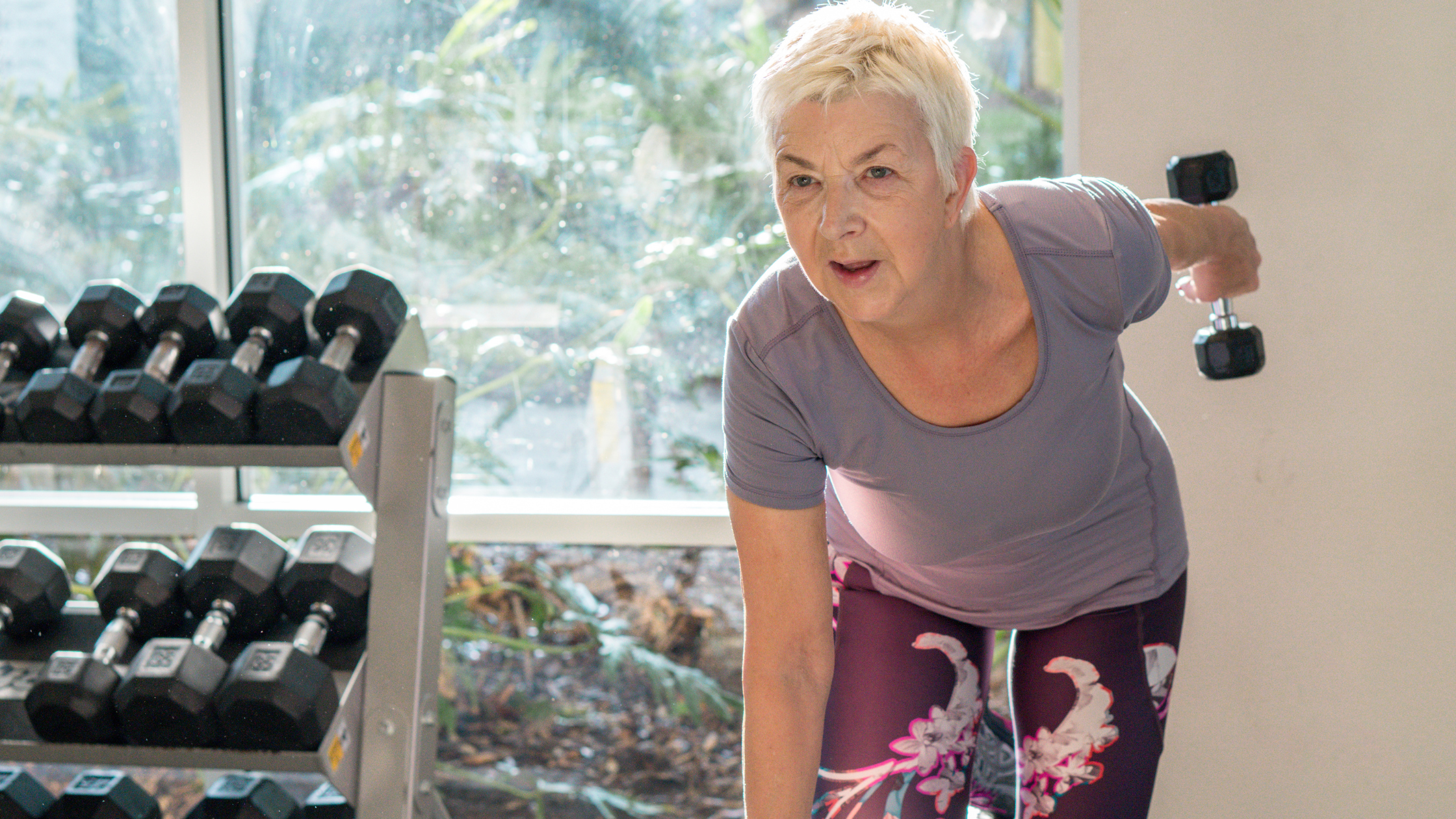Weight Training for Over 40: Tips That Yield Results
Written by TYE Medical on Oct 13th 2025
While cardio may keep your cardiovascular system strong and ward off extra pounds, science shows that resistance training with weights is key to slowing the aging process in middle age. Lifting weights improves brain function, metabolism, health, blood sugar control, and decreases your risk of all-cause mortality. This adds vitality as you age into your 40s, 50, and 60s. By taking the weight training challenge (with doctor approval), you can stave off the onset of sarcopenia and other age-related degenerative diseases and not waste away as many think is inevitable. The truth is, you can lose fat and build muscle as you age if you commit and follow these effective tips for weight training.
Battling stress incontinence and hesitant to try a workout routine? Check out our article, Exercising with Stress Incontinence: How to Beat the Leaks!
1. Start with Bodyweight Workouts
If you are new to weight training, it’s recommended that you begin by using your own body weight for resistance. Doing so allows you to master basic movement patterns before you begin adding weights or machinery. This helps you learn techniques and practice posture even before going to the gym.
Bodyweight workouts can be very effective for building muscle and can be done at home with little to no equipment. However, you will still require supportive, comfortable footwear and a mat. Sometimes a chair or a step (stairs work) is needed during certain workouts. The internet is full of bodyweight workout videos, but a popular choice is Fitbit Coach available through the Fitbit app with both free and premium versions. (Android download - Apple download)
2. Learn Correct Form

Not only does it prevent injury to use the correct form when strength training, but it also makes your workouts more effective. And keep in mind the risk of injury when strength training over 40 is even greater and more difficult to heal from in some cases. Videos or apps are a great way to see the correct way to perform each exercise. Many beginner resources also verbally coach you in proper form for each move.
You should also ensure correct form by beginning with lighter weights; don’t lift too much too soon. This causes excessive strain that keeps you from proper form, promoting injury. It’s also wise to start with more basic, foundational exercises. Once you master these forms and see progress, you can begin adding additional exercises and phasing out the more basic ones. Here are some basic weight training exercises that are a great place to begin if you’re over 40:
- Squats (sumo squats and split squats)
- Rows
- Pull-ups
- Bicep curls
- Tricep curls
- Lunges
Don’t let the term “basic” deceive you. These are highly effective exercises that will challenge your muscles and build strength when properly executed. Each maneuver also strengthens several joints, which is important when you’re weight training over 40.
You might prefer hiring a personal trainer if all this seems too far out of your comfort zone, and you are very concerned about injury. A personal trainer can ensure proper form, plan your workouts, and help you maintain the appropriate level of challenge.
3. Set Realistic Goals

Don’t expect stunning gains to come quickly. Overnight change isn’t a reasonable expectation. Metabolism slows by around 5% every decade after 40. Noticeable changes in fitness, strength, and appearance will come, but not as quickly as someone in their 20s.
When you’re in your 40s, 50s, and 60s, it’s even more critical to start slow and build gradually. You don’t want to push yourself too hard and too quickly. Not only does this sabotage your workout, it also increases your risk of injury and overly taxes your entire body. This is not a good thing, especially long term.
Instead, take a smarter approach and gradually add more weight or reps as you gain strength. Steady growth is far better than burning out too quickly, giving up, or sustaining an injury. If you continue with realistic goals in mind, working steadily, you will see results in due time.
When it comes to weight training over 40, it’s best to stick to the motto, “Slow and steady wins the race.”
4. Do Full-Body Strength Training Workouts

When you’re ready to move on from bodyweight workouts to using weights and equipment, it’s a great option to begin with full-body workouts. This helps you to simultaneously build muscle and burn fat. A full-body workout hits all the major muscle groups in one session, which works for beginners because each muscle group isn’t strong enough to exercise for very long. By hitting all of them in one session twice a week, you’re being productive and burning more calories and fat.
However, once you gain enough strength, you might prefer a split workout, which means working one or two muscle groups each session and working them longer. This means working out at least four days per week. However, it’s all a matter of preference. Studies show that whether you choose full-body or split workouts, there is no significant difference in muscle gain.
Weight Training Over 40: Take Advantage of the Benefits

The bottom line is that weight training isn’t just for bodybuilders. The aging process triggers muscle loss, and if you want to maintain reasonable strength and vigor to stay active as you age, then you need to combat muscle loss. It’s a matter of health like daily cardio. The sooner you begin a routine, the better off you’ll be. But be sure to follow these tips, beginning with bodyweight workouts, learning correct form, and maintaining a slow but steady progress. Total body workouts are often a great idea, especially when you’re just starting.



